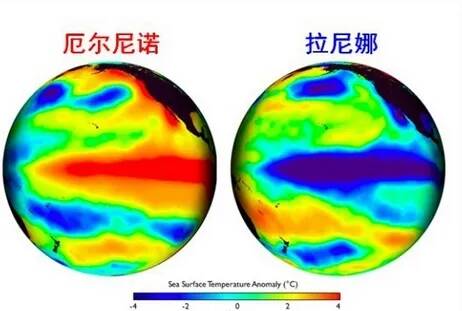Another Lanina! Factors influencing coffee production and price +1
In recent days, extreme weather continues to affect the world, mainly due to the influence of El Niño. Many meteorological experts said that 2023 is an El Niño year, which will usually lead to an increase in global temperatures in the following year, leading to frequent and increased intensity of extreme weather events.

It is expected that the sea temperature in the equatorial Middle East Pacific will decline in the next two months, and the El Niño event will end in May 2024, but may enter La Niña state in summer (June-August).
In addition, according to the latest assessment report of the United Nations Intergovernmental Organization Change Committee, it is predicted that the trend of increasing extreme high temperature events in Asia will continue in the coming decades. In an earlier report, it was pointed out that Asia's warming rate is higher than the global average, and it is still the region with the most frequent climate disasters, with floods and storms causing the highest casualties and economic losses.

The return of La Niña will lead to widespread and sustained abnormal cooling of sea surface temperatures in the eastern and central equatorial Pacific. It will affect the output of coffee and other agricultural industries in many countries.
In Brazil, La Niña weather may bring drought to Brazil's coffee producing areas around September, and September is the coffee flowering period for Brazilian coffee. Drought will make plants short of water and make it difficult to bear fruit due to lack of nutrients, which may cause coffee production has been significantly reduced.
For Vietnam, El Niño weather has been affecting coffee growth in 2024/25. Reduced rainfall and drought in the central plateau area of Vietnam have resulted in an unsatisfactory coffee flowering period in April, which will ultimately affect coffee production in future seasons. In addition, La Nina will increase rainfall in Southeast Asia and may cause floods, landslides and other impacts, damaging local farmland and crops.
La Nina will also bring drought to central Africa, while floods will occur in southern Africa, affecting coffee and other agricultural industries in many African countries and may cause African countries to experience very serious food shortages.
In addition, it may lead to frequent hurricane disasters or floods in Central America. In addition to affecting local production, it may also damage local infrastructure and affect transportation logistics.
In recent years, global demand for Robusta coffee has increased, mainly because current traders are looking for more affordable blended coffee beans, especially in the European and American markets. With the increase in coffee demand, coupled with news of production cuts in several Robota producing countries, Robota coffee prices rose for a time. According to data from the International Coffee Organization, Robota once reached their highest level in 45 years in early May.
Although coffee prices have dropped at present, many people in the coffee industry believe that in the second half of 2024, due to factors such as rising geopolitical risks, La Niña phenomenon after the El Niño phenomenon, and the slow decline in overseas inflation, coffee prices will be in the future. There will be a round of increases.
Important Notice :
前街咖啡 FrontStreet Coffee has moved to new addredd:
FrontStreet Coffee Address: 315,Donghua East Road,GuangZhou
Tel:020 38364473
- Prev

Mexico COE results are released, and award-winning varieties Obata, Marsellesa and Oro Azteca are introduced
CoE (Cup of Excellence) is one of the most authoritative boutique coffee competitions in the world and the first global Internet auction platform for award-winning coffees. It was founded in 1999 by the Alliance for Coffee Excellence (ACE). And every country can bid for the COE competition, and
- Next

Three values exploded at once! Nanjing grandma brewed coffee with pure hands!
▲ Click to pay attention| Daily Boutique Coffee Culture Magazine Coffee Workshop Recently, Nanjing grandma's ten-yuan hand-brewed coffee has been circulated on social media, becoming a drink that many netizens have specifically checked in to buy in recently. This grandma's store is not big, located at the corner of a certain street in a noisy city, on the glass at the door
Related
- Being chased out of the rain in front of Starbucks?! Store: Sheltering from rain under umbrellas poses a safety hazard
- The white moonlight has changed?! Lucky launches "Big Winter Pear American"
- Hand-brewed coffee three-stage method, high-sweet and universal brewing method to share! What does the high sweet water level of hand-brewed coffee mean?
- What is the difference between raw, refined and full espresso coffee? How to extract espresso and taste good?
- A complete list of coffee bean names and their meanings! What is Yejia Shefi coffee? Where is Mantelin coffee?
- What grade does Arida Manor Kaduai coffee beans belong to? What treatment is Arida ASD slow anaerobic sun exposure?
- The milk tea cup becomes smaller?! Overlord Tea Girl launches a new "Return to Yunnan" series
- Accused of selling counterfeit and high-priced coffee beans! Well-known boutique coffee brand "Oukelao" bowed and apologized!
- How to make espresso dumplings? Can I eat coffee and glutinous rice balls together?
- Save the unformed and stagnant powder cakes in one second! What is the problem with stagnant water in the powder bowl of the espresso machine?

